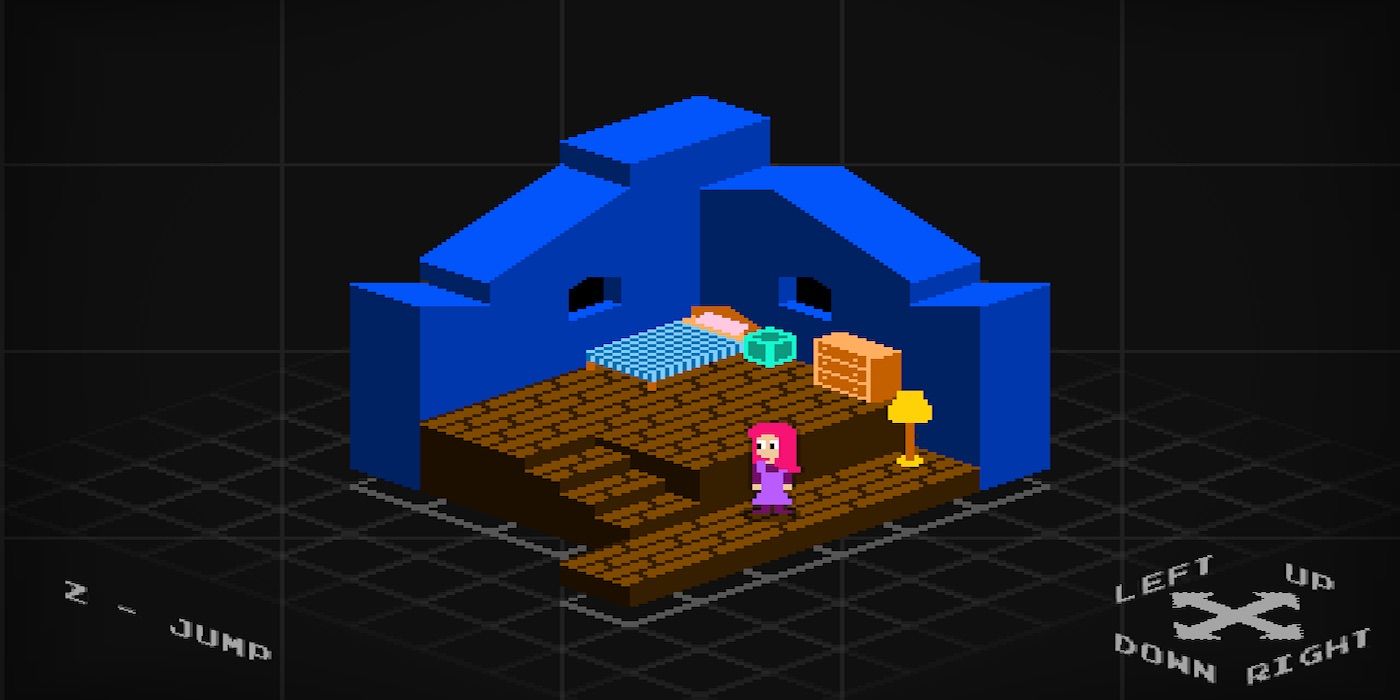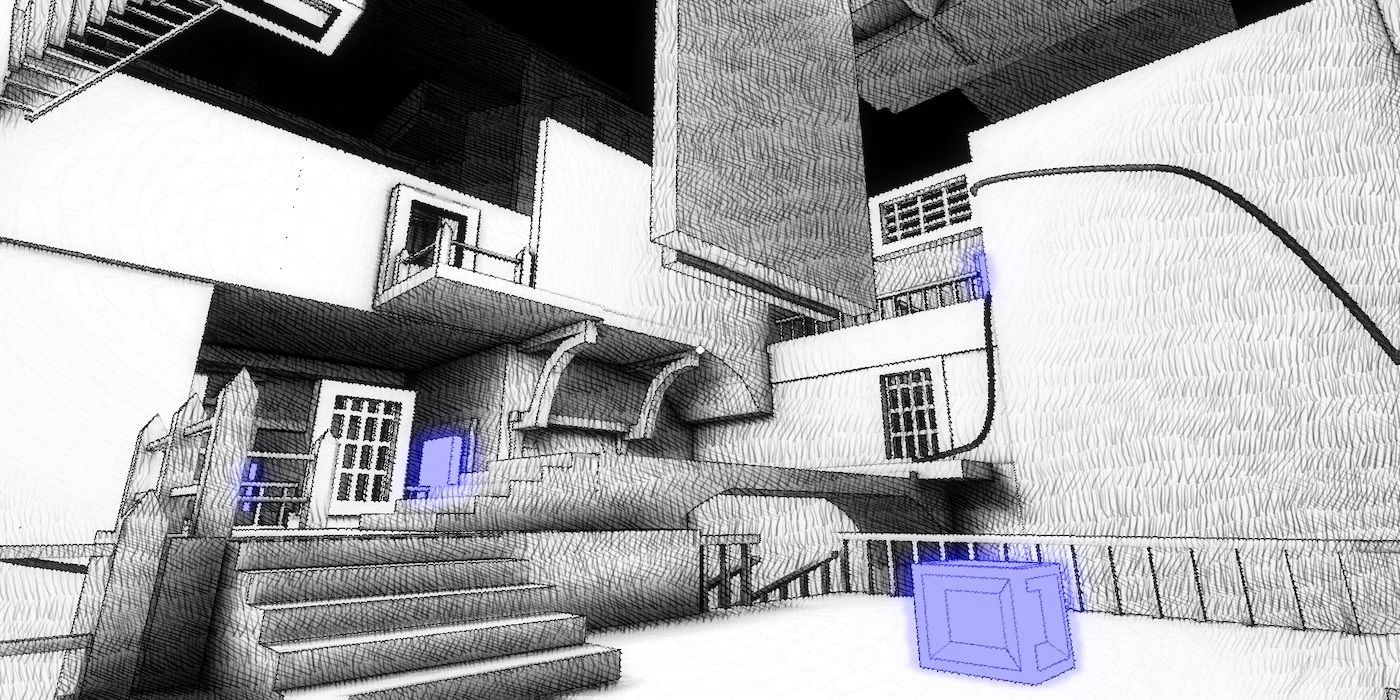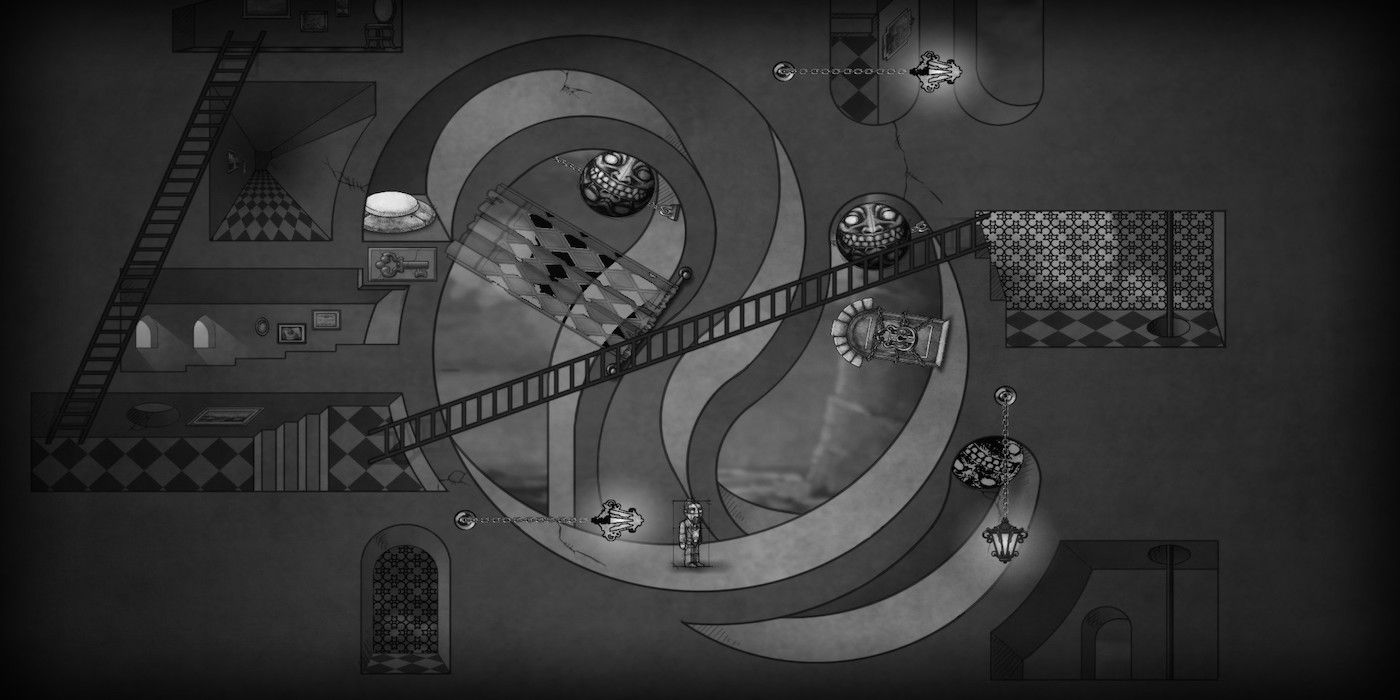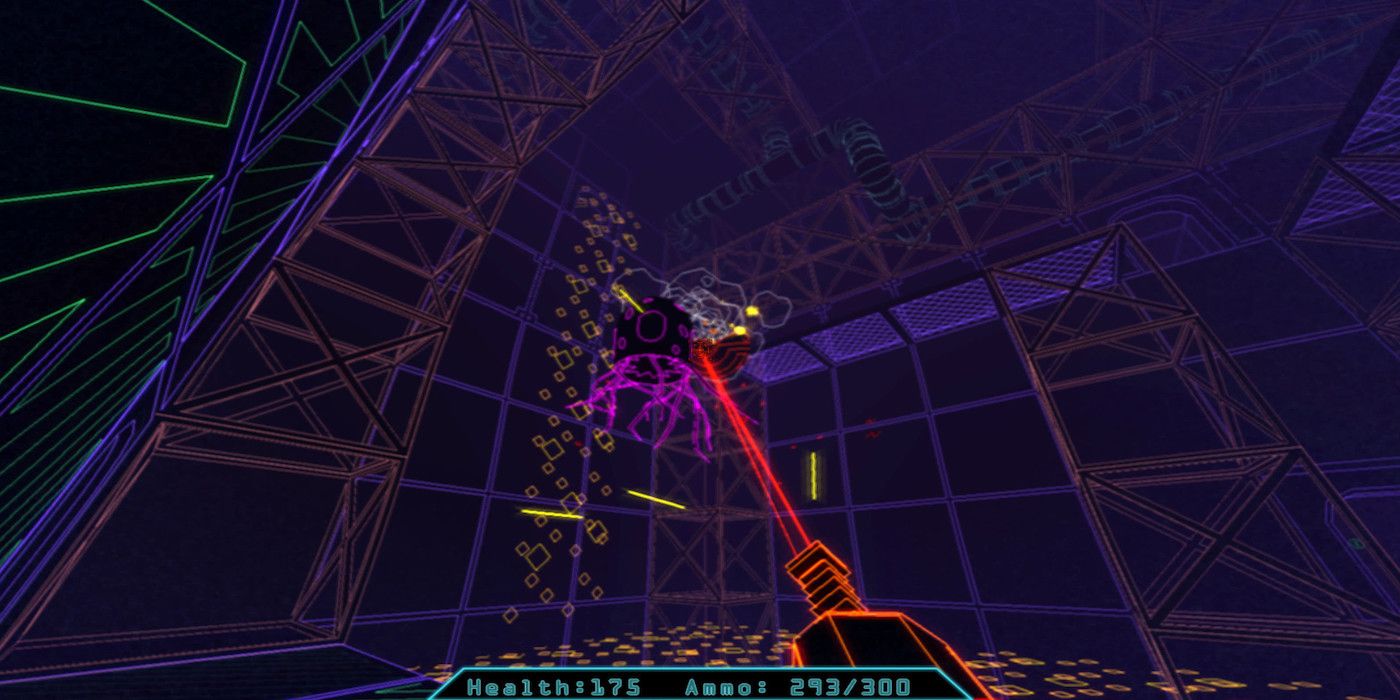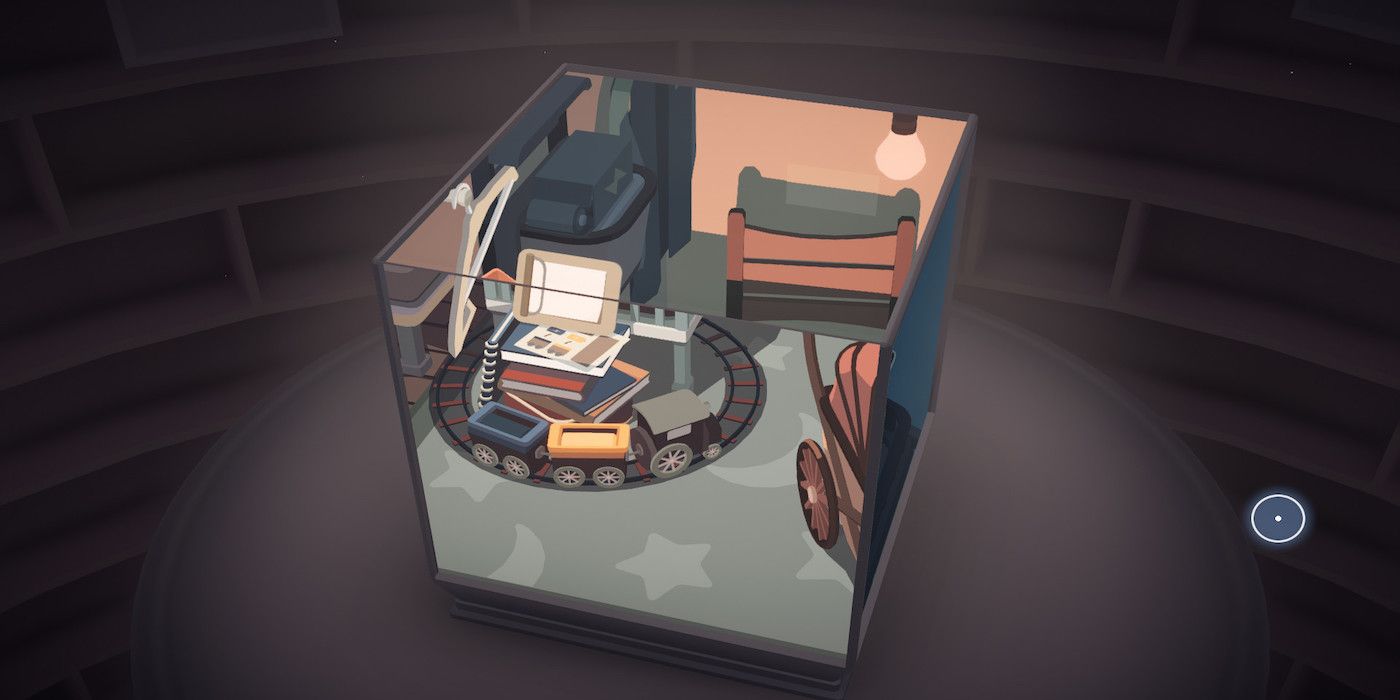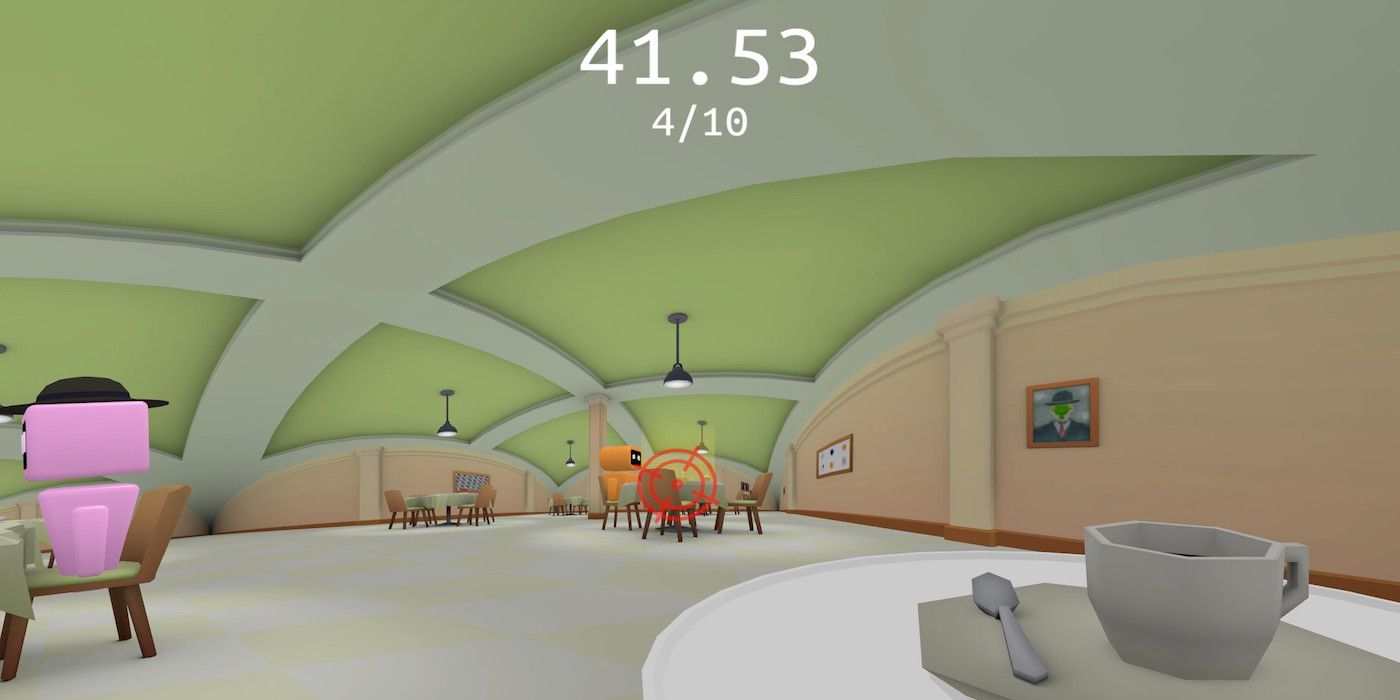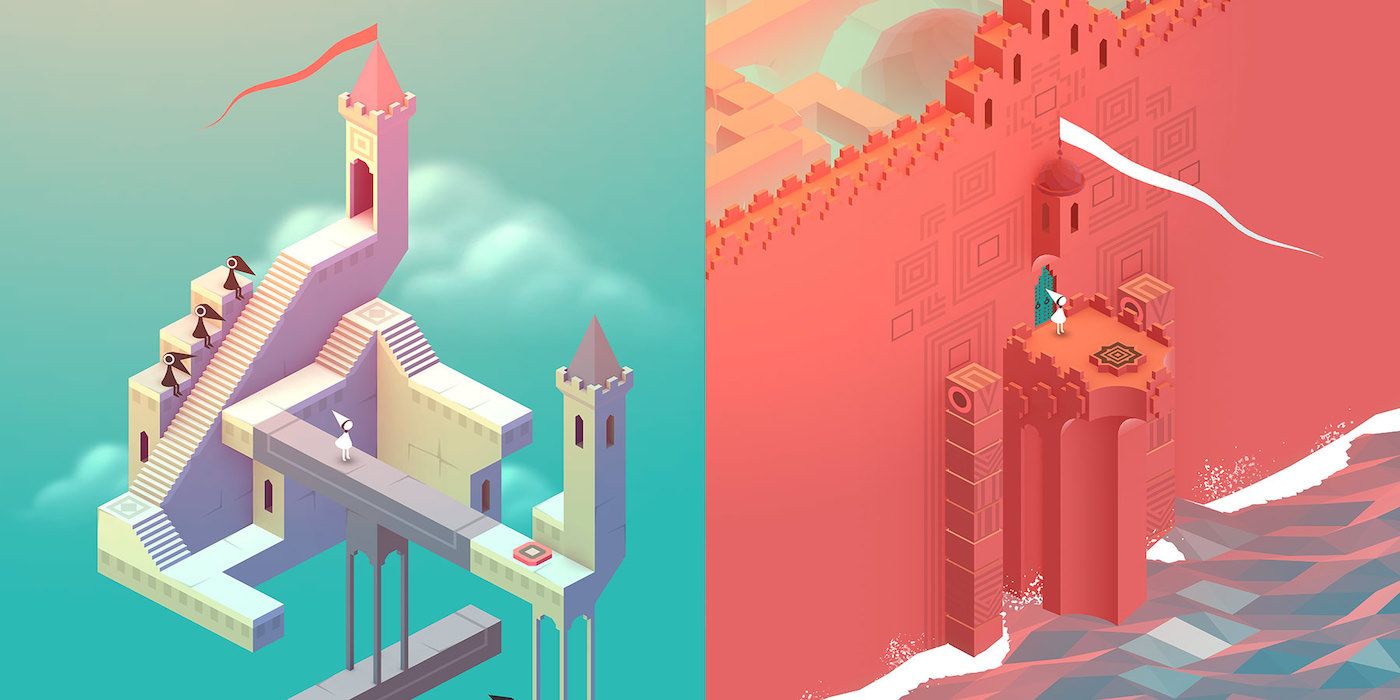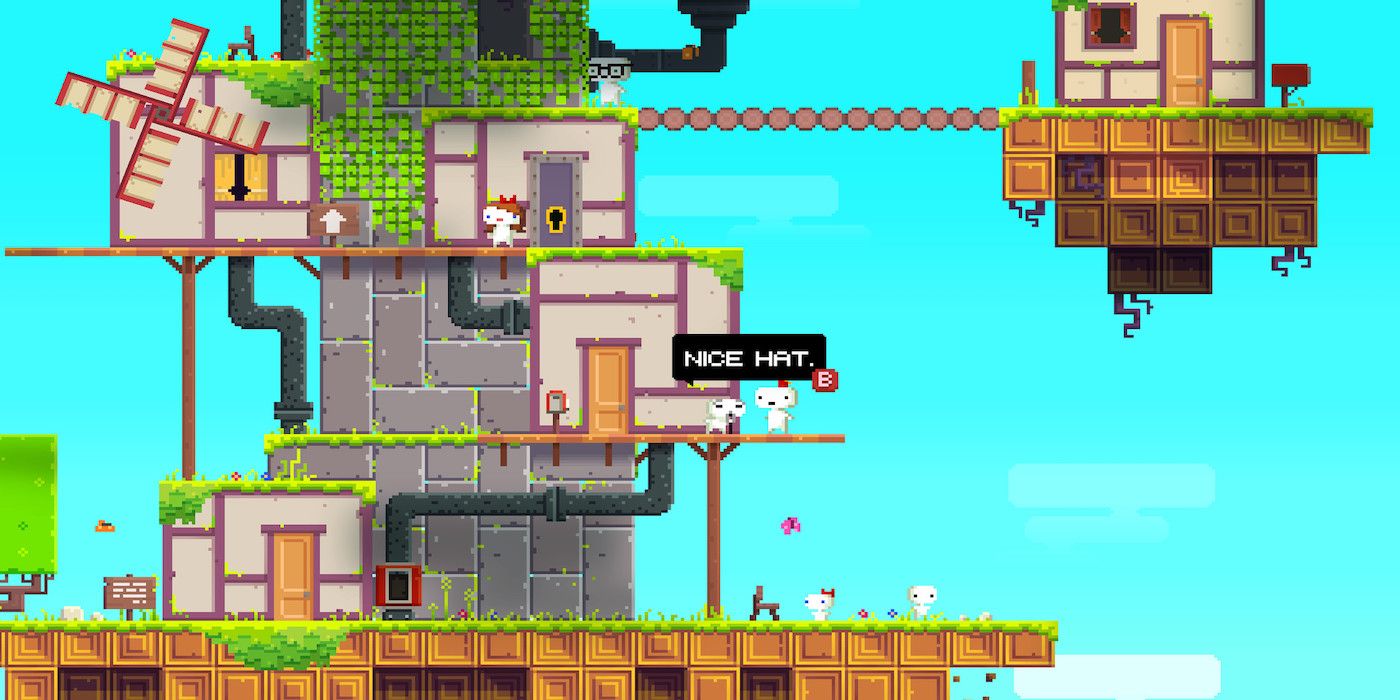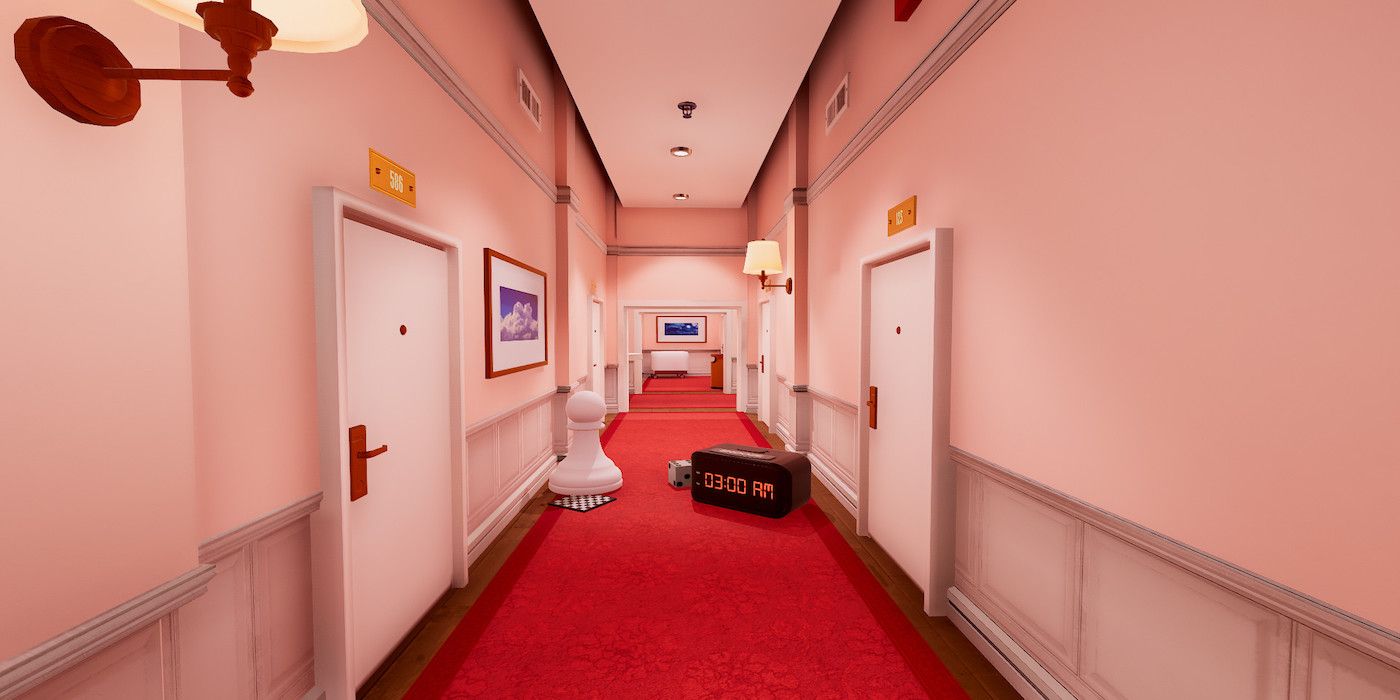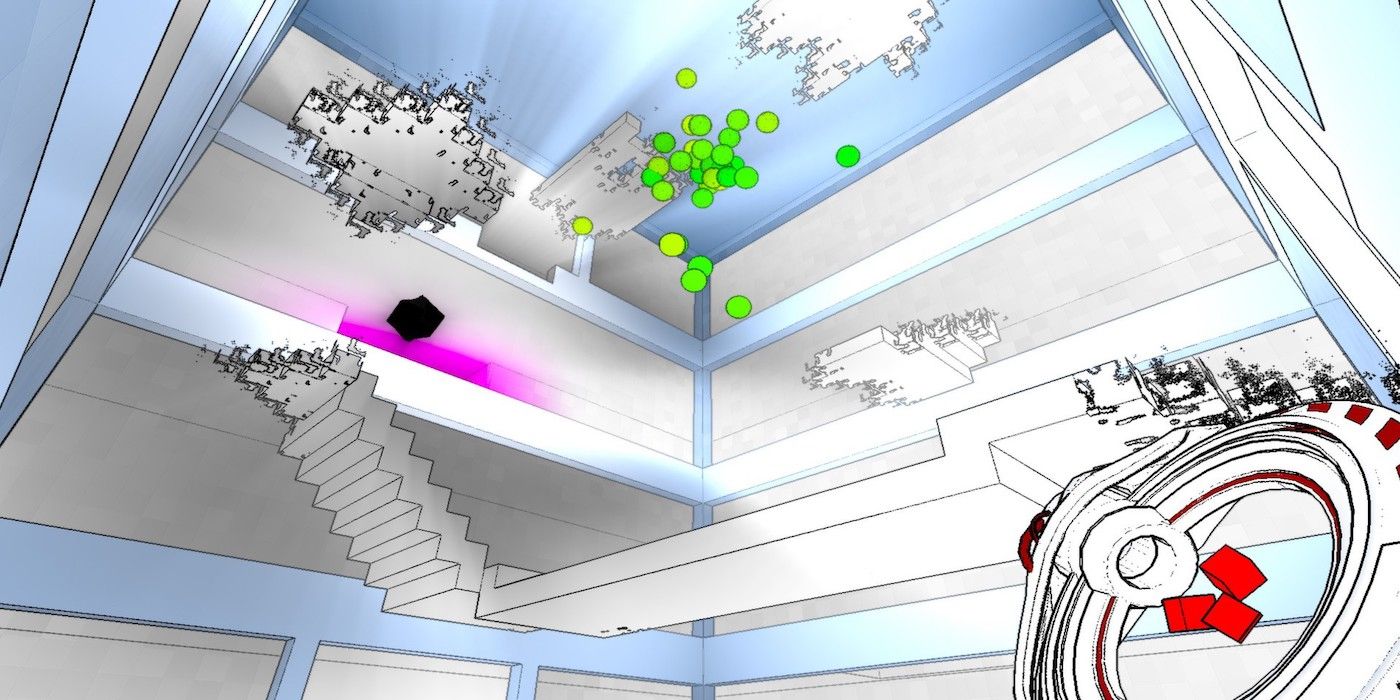In reality, there are certain rules of geometry and physics that everyone has to abide by. For example, a basketball court cannot fit within a tiny cottage, or an object doesn't actually change size when viewed from farther away. Within video games, however, players can explore environments and universes that only exist in theory and could never exist in our perceived dimensions.
While most games employ some unrealistic environments and mechanics, for instance, how Portal allows players to instantly cross between two completely separate points in space, there are some titles that completely change a player's perception throughout the experience.
Naya's Quest
Created by award-winning Irish video game developer Terry Cavanagh, who is most known for developing Dicey Dungeons, Super Hexagon, and the popular Flash game VVVVVV, Naya's Quest is a free 2013 isometric puzzle game that takes place in an apocalyptic world that is slowly shrinking. The main character, a young woman named Naya, decides to travel to the edge of the world to uncover the truth.
But, to reach the edge, she must use a special device called a Scanner that can show the player a cross-section of every platform on her level. This is important because what the player sees on the screen for each level that Naya traverses isn't what's actually there, so it's extremely likely that the player will simply fall through a platform they thought existed if they don't use the Scanner.
Fragments of Euclid
Inspired by the mathematical artworks of the famous Dutch graphic artist M.C. Escher, Fragments of Euclid is a free 2017 first-person puzzle adventure game available on Itch.io, and one of the many great monochromatic games. With a sketched design that emulates many of Escher's pieces, the player must traverse a world filled with impossible geometry and solve puzzles.
Based on the developer's previous prototype Non Euclidean Room, which was created in 48 hours for the 37th Ludum Dare game jam, this game expands on the ideas of the previous title and even adds a hint of a story. While Fragments of Euclid is short at the moment, the developer plans to add more puzzles, areas, and plot to the game in the future.
The Bridge
Another game that's inspired by Escher's art is the 2013 title The Bridge, which is an obscure visually appealing puzzle game that also uses a grayscale hand-drawn art style. After a nameless man is woken up by an apple falling on his head, the man is led to his house, which acts as a hub for the game's multiple levels.
During each level, the player has to guide the man to find a key and reach the level's exit. To do this, the player will need to move the man left or right and rotate the world in order to manipulate gravity.
Paradox Vector
While games that primarily feature geometrically, mathematically, and physically impossible environments have become more common in recent years, most of these titles only exist within the puzzle genre. But, there are a couple of recent examples that have tried using impossible spaces in other genres, which includes the 2020 first-person shooter Metroidvania Paradox Vector.
This title combines multiple seemingly incompatible influences together, including gameplay elements from classic shooters like Doom, the search action non-linear elements of Metroid Prime, the vector graphics of retro Atari games like Tempest, and the impossible spaces from Escher's art. As the player shoots at various Half Life-esque aliens, they must traverse the incomprehensible facility to find paradox triangles in order to escape.
Moncage
Released towards the end of 2021, Moncage is a puzzle adventure game where each side of a cube holds an entire 3D environment that's different from the environments on the other sides. Similar to the Storybook-esque puzzle game Gorogoa, the player will have to manipulate a unique scene on one side of the cube so that it can line up and affect a different scene on another side of a cube.
For example, the lighthouse tower in one scene might line up with some storage items in a dark room in another scene. Once the player angles the cube so that the two pieces merge, the light from the lighthouse will shine in the dark room, which will allow the player to see and press a switch. While there's no dialogue, the environments and the photos found within the levels all help tell a story.
Hyperbolica
Although it has become a recent trend to refer to any game that creates an impossible space as "non-Euclidean," the term is actually a mathematical term that has a particular definition. If Euclid's fifth geometric postulate, which states that two parallel lines will never intersect, is changed, then two possible non-Euclidean geometries are born: hyperbolic and elliptic. Because CodeParade wanted to simulate what it's like to live within a hyperbolic world, the developer created the game Hyperbolica.
In this 2022 first-person surreal exploration game, the main character accidentally falls asleep during geometry class. Since this geometry class was occurring within a virtual reality technology known as the Brainlink system, the protagonist accidentally falls into a hidden world called Hyperbolica where parallel lines diverge and space grows exponentially. Now, the player can explore the world, solve puzzles, and try various activities.
Monument Valley
Released in 2014 for IOS and Android phones, Monument Valley is a gorgeous award-winning isometric puzzle game that takes the ideas introduced by the 2008 Echochrome and takes it all to the next level aesthetically. As a silent humanoid Princess named Ida, the player must traverse through multiple impossible structures.
Because Ida's ancestor, who was a bird-like deity, took away the world's sacred geometry and cursed the humans into crow people, Ida has decided to return the sacred geometry and break the curse. After the success of this title, the game received a sequel in 2017 for IOS and Android.
FEZ
Monument Valley and other indie games such as Secrets of Rætikon were directly inspired by one of the most significant indie games from the early 2010s: FEZ. Originally released in 2012 for the Xbox 360, this puzzle platformer has received multiple ports over the years including a port in 2021 for the Nintendo Switch. The game follows a humanoid creature named Gomez who lives in a small, peaceful town that only experiences the world in two-dimensions.
Similarly to the classic satirical novella Flatland: A Romance of Many Dimensions, Gomez discovers the third dimension after witnessing a giant golden hexahedron. But, after receiving a magical Fez that allows Gomez to traverse to the other sides of the 3D world, the hexahedron explodes and creates a hole within the game's universe. Now, Gomez must use the new powers to gather all the pieces of the hexahedron to restore the shape and save the world.
Superliminal
Inspired by titles such as Portal and the Stanley Parable, Superliminal is a first-person surreal game where the player is guided by an omnipresent A.I. through a series of puzzles. After the player is made to fall asleep at the Pierce Institute in order to test the new SomnaSculpt technology, they end up trapped in their dreams.
The player is guided by Dr. Glenn Pierce and his A.I. assistant in order to find a way out. To solve the dream's puzzles, the game primarily uses the concept of forced perspective, which means that an object is as small or big as it appears to the player. For example, if the player picks up a large object from far away and places it at their feet, the large object becomes a small object.
Antichamber
Released in 2013, Antichamber is possibly the first first-person puzzle-platformer that utilized impossible spaces and objects as its primary gimmick. As an unnamed protagonist, the player wakes up in an antechamber and discovers that the exit is behind a glass wall.
In order to reach the exit, the player must explore the large complex and solve puzzles that deliberately break preconceived notions of possible space. For example, sometimes a player can double back and find themself in a completely different location, or a cube can have multiple different 3D spaces depending on which side the player looks at it.


